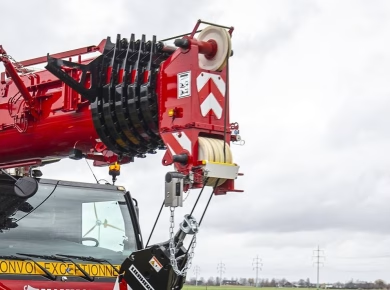The phrase “zero accidents” often echoes through the hallways of construction sites, boardrooms, and safety seminars alike. It sounds like the holy grail of workplace safety, a target so compelling that it’s become a mantra for many organizations. But here’s the reality: this ideal is not only elusive; it can also lead to dangerous complacency. The relentless pursuit of “zero accidents” can create a culture where the focus on numbers overshadows the practical measures that truly enhance safety. I’ve witnessed firsthand how this mindset can be detrimental, both in my experience on the ground and in conversations with fellow safety professionals.
The Allure of Zero Accidents
The promise of a zero-accident workplace is undeniably attractive. It suggests a utopia where every worker returns home unharmed, and every task is executed flawlessly. For managers, it provides a clear metric to gauge success and, on the surface, promotes a culture of safety. However, the allure of this ideal can blind organizations to the complex realities of human behavior and environmental factors that influence safety.
Understanding Human Nature
Humans are inherently imperfect. We make mistakes, we misjudge risks, and sometimes we rush through tasks. The expectation of zero accidents can inadvertently encourage employees to conceal near-misses or minor incidents, fearing repercussions rather than learning from them. In environments where the stakes are high, such as in construction, this can create a false sense of security. An employee might think, “If I don’t report this, it won’t count against our zero-accident goal.” This mindset can lead to a breakdown in communication and an increased risk of serious incidents.
The Flaws in a Numerical Approach
When safety metrics are reduced to numbers, we often miss the nuances of what those figures represent. A focus solely on the zero-accident metric can lead to a culture of fear, rather than one of learning and improvement. For example, a company might celebrate reaching a milestone of 200 days without an accident, but what about the near misses, or the safety violations that went unreported?
Shifting Focus to Continuous Improvement
To create a genuinely safe workplace, we need to shift our focus from achieving a specific number to fostering a culture of continuous improvement. This means encouraging open dialogue about safety concerns, creating systems for reporting and analyzing near-misses, and investing in ongoing training. When employees feel empowered to speak up about hazards without fear of punishment, safety becomes a shared responsibility, and the organization can learn from its experiences.
Real-World Challenges
In the field, the challenges of maintaining safety are multifaceted. Consider a construction site where workers are under pressure to meet tight deadlines. The push for speed can lead to corners being cut, safety protocols being overlooked, and ultimately, accidents occurring. In this scenario, striving for zero accidents can become an empty slogan that does little to address the real issues at play.
Case Study: The Cost of Complacency
I recall a project where the team was so focused on maintaining their “zero accident” status that they overlooked critical safety training for new hires. This complacency resulted in a near-fatal incident involving a newly hired worker who was not adequately trained on equipment safety. Had the organization prioritized thorough training and open communication over the pressure to maintain a perfect record, this accident could have been prevented.
Creating a Safety-First Culture
To genuinely enhance workplace safety, organizations need to cultivate a culture that prioritizes safety above all else, beyond just the numbers. This involves integrating safety as a core value in every aspect of operations.
Investing in Training and Resources
Training should be ongoing and adaptable, addressing the unique needs of the workforce. Regular safety drills, workshops, and refresher courses can help keep safety at the forefront of employees’ minds. Additionally, providing accessible resources for employees to report hazards and suggestions for improvement fosters a proactive approach to safety.
Encouraging Accountability
Accountability should be a two-way street. While management must lead by example, employees should also feel responsible for their safety and that of their coworkers. Creating a system where teams can work together to identify potential risks and develop strategies to mitigate them can strengthen this culture of accountability.
Conclusion: Rethinking Safety Metrics
The concept of zero accidents can be dangerously misleading. While it is essential to strive for the highest safety standards, it is crucial to recognize that accidents will occur as long as humans are involved in complex tasks. Instead of fixating on a perfect record, let’s focus on building robust systems that prioritize safety, foster transparent communication, and encourage continuous improvement. By doing so, we not only protect our workforce but also create a more resilient and adaptable organization. Safety should not be viewed as a target but as a journey—a commitment to learning from every experience, whether good or bad. In this way, we can ensure that our workplaces are not just striving for zero accidents but are genuinely safe environments for everyone involved.


